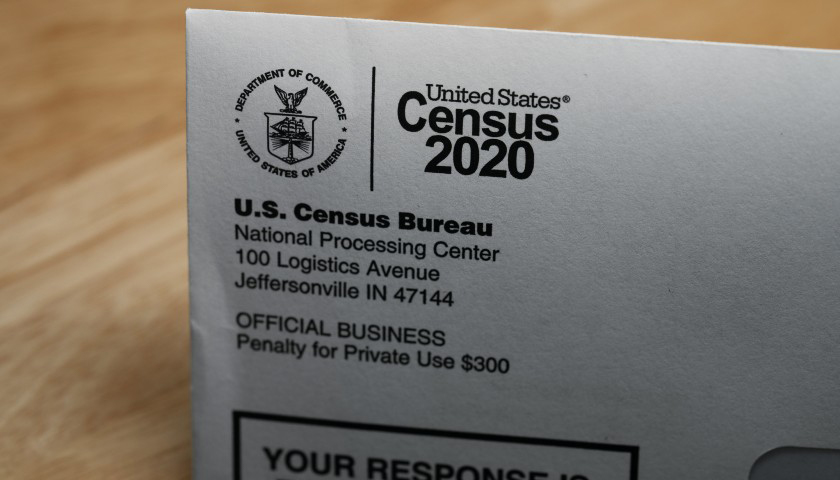by Sean Trende
Going into this decennial reapportionment, it appeared that states’ congressional delegations were poised for widespread reshuffling of the deck. New York was on the cusp of losing two seats, while Texas and Florida were in a position to pick up three and two, respectively. Given the legislatures that control redistricting in these states, it seemingly offered substantial opportunities for Republicans to redraw the lines in ways that boosted their chances in the House significantly.
Instead, the reapportionment numbers announced by the U.S. Census Bureau on Monday were something of a wash. Only seven states lost seats while six gained seats.
There were notable outcomes here: California lost a seat for the first time in its history. Rhode Island – widely expected to be reduced to a single-member state – held onto its two House seats (in fact it wasn’t a terribly close shave). New York, even with COVID deaths pushing it toward a loss of two seats, lost just one.
There were significant close calls as well. Minnesota, thought to be losing a seat, held onto its eighth district by 26 people; Montana, seen as a guaranteed winner, received its second seat (which it lost in the 1990 reapportionment) by only 6,000 people. New York was just 90 people away from not losing any seats. Ohio was 11,000 people away (in a state of around 11 million) from holding onto all of its seats.
Even the quiet nature of this reapportionment was historic. The 14 total seats that will be reshuffled is the smallest number in the history of reapportionments. This is true even with newly admitted states excluded, as well as accounting for the growing size of the House during the 1800s.
What will this mean for redistricting? In November of last year I estimated that Republicans would probably gain six seats from a normal redistricting. In other words, without doing anything like trying to squeeze a 13-2 map out of Ohio (which is doable) or break apart Emanuel Cleaver’s Kansas City-based district in Missouri (again, doable), Democrats would lose control of the House.
How does this change things? Here are a list of states that have to be revisited given the reapportionment shifts:
Alabama was expected to lose a seat. Instead, it holds all of its districts, which the Republican legislature will redraw. Upshot: Republicans gain a seat over the old baseline.
Arizona, surprisingly, is not gaining a seat. That seat would have been drawn by an independent commission. The earlier analysis gave it to the GOP, though upon revisiting the state, it likely would have been a Democratic seat in the Phoenix suburbs. At the same time, Arizona’s 1st and 2nd districts will likely remain swing-ish. Regardless, a seat I’d awarded (probably incorrectly) to Republicans won’t be created. Upshot: Republicans fail to gain a seat from the previous baseline.
Florida only gains a single seat, instead of the two many expected. A lot here depends on how aggressive the GOP chooses to be, and how far the state Supreme Court will allow it to go under the fair-districts amendment. Regardless, Republicans likely lose out on a district they were slated to win.
Minnesota, as noted above, appears unlikely (for now) to lose a seat. I assumed that seat would be a Democratic-leaning one. Population shifts may yet force some Democrats into increasingly unfriendly territory, or they could end up with a favorable court-drawn map. Regardless, Democrats won’t lose the seat I’d projected they would.
Rhode Island was widely expected to lose a seat. It won’t. In fact, it didn’t come close to losing it. So Democrats keep a seat they certainly would have lost.
Texas was expected to gain three seats; it will gain two instead. As with other states, a lot here will depend on how aggressive the GOP would like to be. For now, I’ll assume that the party isn’t particularly aggressive (though it probably will be) and won’t draw a seat it otherwise would have won.
So Democrats likely will gain two seats net over their previous baseline, meaning that Republicans won’t be in a position to take the House simply through a “natural” redistricting. Of course, there is still some wiggle room here as there are cascading effects from these changes. As noted above, some of Arizona’s Democratic-leaning districts that likely would have become safe as a result of gaining a seat will likely have to take on some Republican-leaning territory and will be more marginal. There may be similar effects in Florida and especially Texas. Regardless, this is good news for Democrats in their quest to hold the House.
– – –
Sean Trende is senior elections analyst for RealClearPolitics. He is a co-author of the 2014 Almanac of American Politics and author of The Lost Majority. He can be reached at [email protected]. Follow him on Twitter @SeanTrende.








